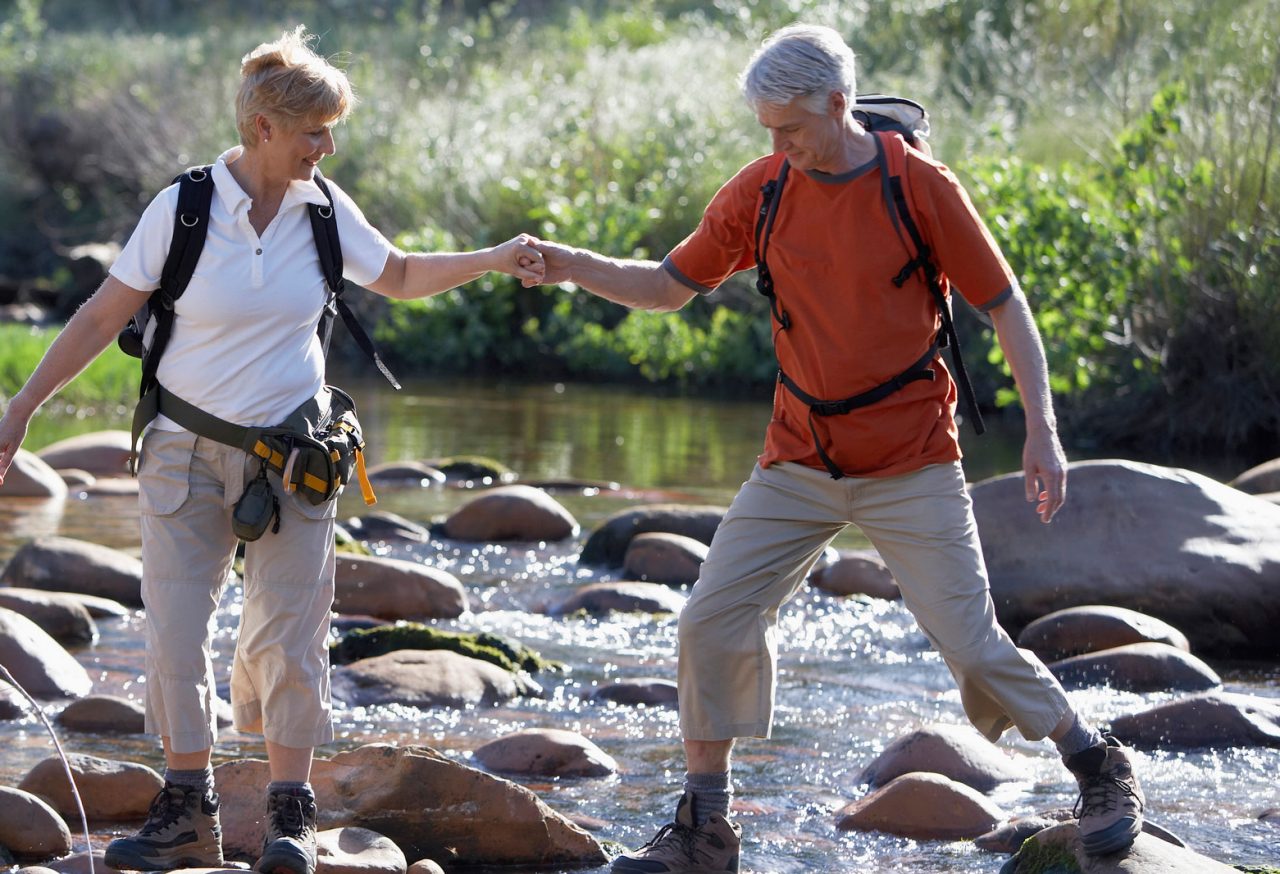Is Rucking a Good Workout?

Dating back to the American Revolutionary War, soldiers started rucking, a trend that is catching on all over the globe today. Here's what you should know.
At first glance, it appears that walking with weights on your back can be harmful. Talk to the folks who’ve embraced rucking, which is simply walking with a weighted backpack, and they’ll tell you otherwise.
“I get a quality workout when I go rucking,” Mara Miller said.
“I’d rather ruck than run because I get a cardio workout from walking and strength building from the weights on my back,” Josh Downey said.
“Everyone can ruck,” Barbara Howard said. “If you can walk, you can ruck. The amount of weight you carry in your backpack depends on you. You start small and gradually increase the weight overtime.”
YOU MIGHT ALSO LIKE: How Safe Is Your Gym?
The first step is to purchase a good backpack and make sure it fits. Secure the pack on your hips, and adjust the shoulder and sternum straps so that the weight is close to the small of your back. That way your backpack won’t swing or bounce as you walk, and the weight inside will be evenly distributed.
In addition to wearing a sturdy backpack, invest in a good pair of shoes and socks.
“Just like running or walking, you need solid foot and ankle support,” Jim Burdumy, an ACE certified personal trainer and a CHEK exercise and holistic lifestyle coach. “Pair those shoes, which you can purchase at any sporting goods shops, with wool socks to prevent blisters and chaffing.”
Burdumy suggests starting small. “Start with 10 percent of your body weight,” he said. “If you weigh 150 pounds, start with 15 pounds of weight in your pack. You can gradually increase the amount over time.”
It’s a lot like walking, running, or any fitness routine. “If you do too much on the first day and are wiped out, you’ll tire of it,” he said. “Exercise should be enjoyable.”
Walk one mile every day the first week. Each week, extend your walk by a half or full mile. Also add five pounds each week to increase your backpack’s weight. Many people ruck with approximately 55 pounds on their backs. “The more weight equals more calories burned,” Burdumy said.
You can fill your rucksack with bricks covered in towels, so the bricks won’t scratch or damage the inside of your bag. You can also put weights or sand in tightly secured plastic bags into your rucksack.
Another idea is to fill your pack with bottled water, which you will probably drink once you start to feel sweaty. “It’s important to stay hydrated when you ruck or do any other type of exercise,” Burdumy said. “And it’s a smart idea to do some stretching before you ruck.”
When you ruck, walk, don’t run. You can hike, but keep your pace steady. At top speed, your pace should be quick short steps, as if you are walk-racing. “The nice thing about rucking is that you can adjust the pace to suit your ability,” Burdumy explained. “You can change pace along the way, going from slow to fast and back to a moderate pace.”
Keep an eye on your posture. You should be upright. Don’t slouch, which puts strain on your back and shoulders.
Bring a friend. Many people ruck in groups. There are events for people all over the country.
It’s a good way to get in shape, burn calories, and strengthen muscles. With rucking or any other exercise, talk to your doctor first.
YOU MIGHT ALSO LIKE: Finding the Best Workout Routine for You
Updated:
August 01, 2023
Reviewed By:
Janet O’Dell, RN